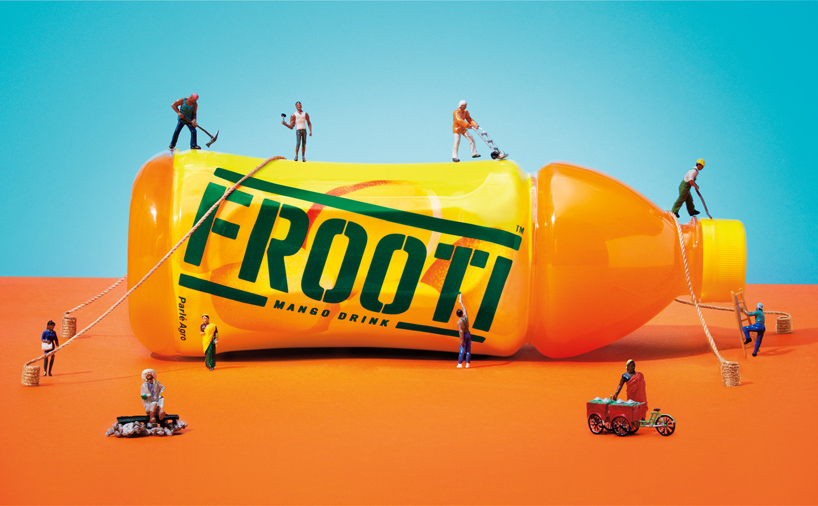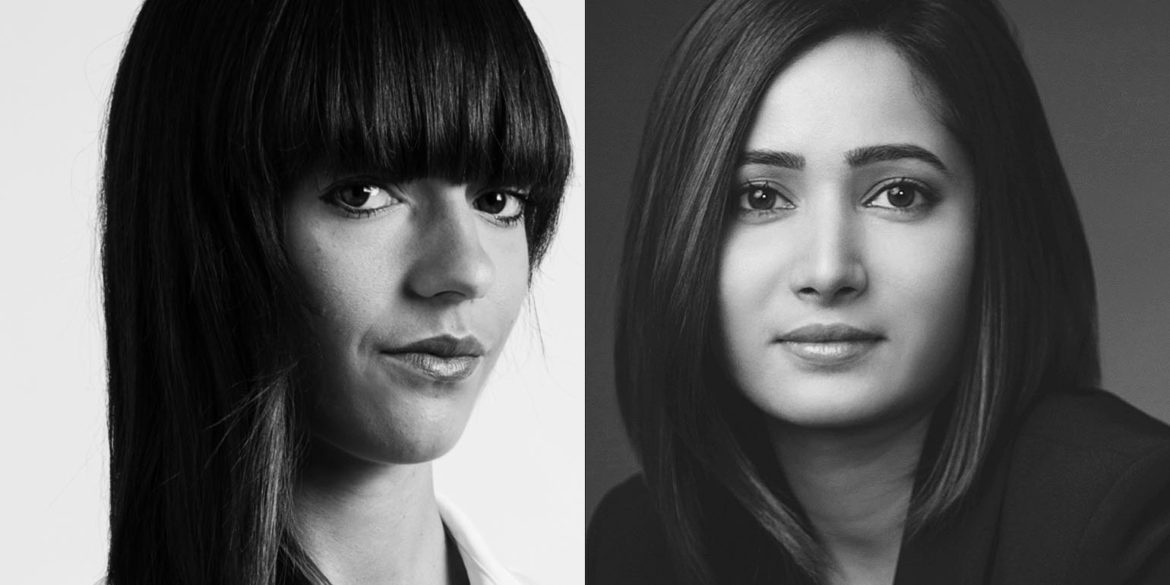Parle Agro’s design-first approach has helped its brands Frooti, Appy and Appy Fizz dominate the market. In this interview with Nadia Chauhan (Joint MD & CMO, Parle Agro) and Jessica Walsh (Founder & Creative Director, &Walsh / Previously, Sagmeister & Walsh), Anant Rangaswami (Editor, Melt) learns more.
Anant Rangaswami: So, Nadia, starting with you, you know, I’ve spent a long time in advertising, commenting on advertising. And personally, I haven’t seen brands which focuses so much on design. Why do you rely so much on design, in your overarching communication strategy?
Nadia Chauhan: I would say it was an accidental discovery actually. It’s not something that we consciously said we were going to do. But a few years ago when we rebranded Frooti, the entire rebranding process we had reached out to people who weren’t from companies that weren’t associated with brands in India, mainly because Frooti being as old a brand or having as much history, a lot of people came with certain notions about the brand, a certain baggage. And we wanted to work with, you know, people who would come with a completely fresh perspective. Help us really unleash the potential of Frooti and not really have that baggage. When we were doing that, we did the entire design for the packaging with Pentagram but then at that point of time we had also reached out to Sagmeister & Walsh and to Jessica and that’s when we actually got to know each other.
We had a very brief conversation actually on the phone and I had emailed her and talked about, you know, just our vision and what we wanted to do and the challenges we were facing. And they had worked on the entire communication piece for the launch of the new packaging, because for host of reasons that we connected a little late and hence they worked on the communication piece at that point of time and it was driven by a very, very strong visual language.
When we looked at all the work in front of us, I think what we had from Jessica was such a solid visual world for the brand that actually just shed the baggage just like that you know. You suddenly saw Frooti in a world that you never saw it before. And it wasn’t forced, it wasn’t unnatural, it just fit into that world really very beautifully and it was just a perfect platform to launch the brand. And that is really where we discovered the power of design in building a brand. So, since then I mean even in terms of the amount that we have invested on static mediums like prints or like outdoor, which we never had in the past, we were primarily a TVC driven company. We felt that just constantly amplifying and building that world and having that world register in the minds of the consumers was evolving the brand so beautifully that since then till now we have been growing in rank, we have been growing, you know, in market share, we’ve been growing rapidly. And today just about 4 years since then we hold the number 2 position nationally and we in fact also hold the number 1 position in many markets in India. We then went on to taking it up for Appy Fizz as well and like I said it was an accidental discovery but it’s a discovery that has really, really paid off and now we are very conscious about the fact that we want to continue building our brands through the power of design.
Anant Rangaswami: In advertising it’s very apparent that advertising created in a market like Brazil, does not work in India simply because the insights are different, the image is different and so on. Now what Jessica brings to the table is a very sophisticated design. Therefore does it stop at a particular demographic and not go below that which you might want it to do. Is there a danger of that happening? Is it a design too sophisticated for a market like India?
Nadia Chauhan: I think that a good design is appreciated by anybody and everybody. India as a market is extremely visual and if you go to any part of India, you know, in the length and breadth of India you see beautiful colors. You see a lot of design everywhere around you. I think that’s something that has really been underplayed in that sense. Now while I say that the entire design element I think that it doesn’t have a demographic you know limitation because we are not designing something like as minimally as say a brand like Apple does which might have a far more sophisticated sort of an appeal. You know we do have a design that is very much in your face and which is something that we have seen that the country really does enjoy and respond well too. In terms of just the whole cultural bit or being able to penetrate or talk to people you know in the deepest parts of the country that is really where our magic I think comes together. I think that we both you know really work very, very closely in ensuring that we’re bridging the cultural gaps. There is a huge amount of cultural appreciation that takes place every year when we are talking about the objectives for that year, the objectives of communication for that year and talking about who we are talking to or you know what challenges we are trying to overcome in that particular, this is challenges, in that particular season and what are the various things we need to do even tactfully. So I think that it’s a relationship that has really evolved very beautifully and with a lot of trust I think that you know she trusts me in a lot of my opinions or judgment of the market or what the market means and I trust her in all that she delivers to us and in the work we eventually execute together.
Anant Rangaswami: So, Jessica, why do you think your work works in India?
Jessica Walsh: When we first had the project we started by looking at the advertising landscape in India. It started with just Googling about ads in India and seeing all the hoardings and what we noticed and then of course when we came to India and we were taking lots of photos and studying and a lot of the ads were so dense with type, and we did see images.
Anant Rangaswami: You are talking only print ads at the moment.
Jessica Walsh: Yeah, type and when there were images there was a lot of clutter and it was just not really standing out. So we were thinking about how to stand out, so from the clutter we were thinking could we create a visual language that’s in alliance so much copy to speak with people and we think design can do that. As Nadia was saying it’s really a visual language we created and we can use design in a way to speak with people and break through the clutter and create joy or make people think about things in a different way.

Anant Rangaswami: Jessica, you’ve worked with each other for 4 years which by duration is very unusual in the Indian advertising market now and a very few brands can say you worked with communication partner for 4 years. How important is the longevity of relationship. What makes next year better than this year or this year better than last year. How important is longevity?
Jessica Walsh: I think having a close relationship and working together year after year just keeps making the partnership even stronger. I mean now we just know each other so well so when we talk it’s like immediately we get it. If the things are not working it makes conversation just that much easier, the changes happen that much faster and understanding the culture better and better every year after coming here, I just think it is strengthening the work so much.

Anant Rangaswami: Now you know we’ve also learnt words like trust. We’ve heard relationship coming from both of you. So how important is trust I mean Nadia you are one that is writing the cheque so you have to do more of the trusting. How important is trust?
Nadia Chauhan: No, I think it is very important and respecting each other is also very important. I think that what’s also unique in this, if we have to call it a client and agency relationship is the fact that …
Anant Rangaswami: What do you call it? You call it like client and agency, what do you call it?
Nadia Chauhan: No, we don’t, at all. It’s a brand partnership, very, very clearly. It’s a very unique one, I mean it’s across different continents. We are working more digitally. You know everything is over some collaborating softwares we use and it’s unique but what makes it more unique is the fact that owners in both places are very self-involved. So today absolutely every single thing that we are doing, I’m involved in and she is involved in and she is as serious about her work as I take my work and I think that that’s very critical. Today there is at no given point of time am I fighting for things like timelines or am I fighting for like, okay, we can do better and I think that both of us are very ambitious and both are very driven. We want to do what it takes to do something that is better than whatever we’ve done in the past. And that’s what allows us to collaborate so well. Well, we are driven by the challenges that we face and it’s a great partnership.
This interview was first published at www.readytomelt.com

